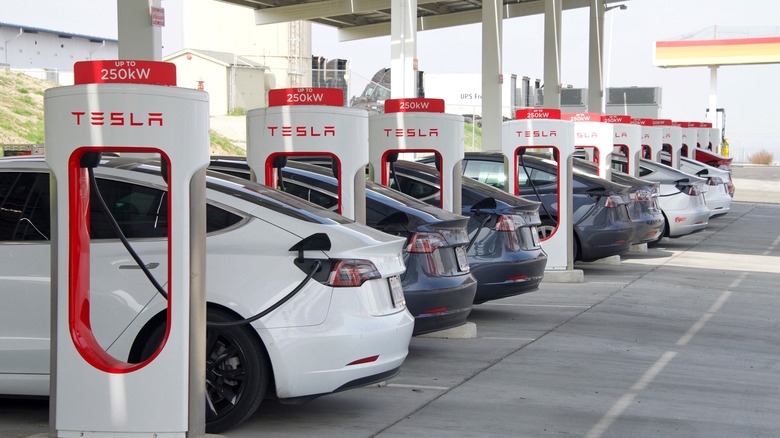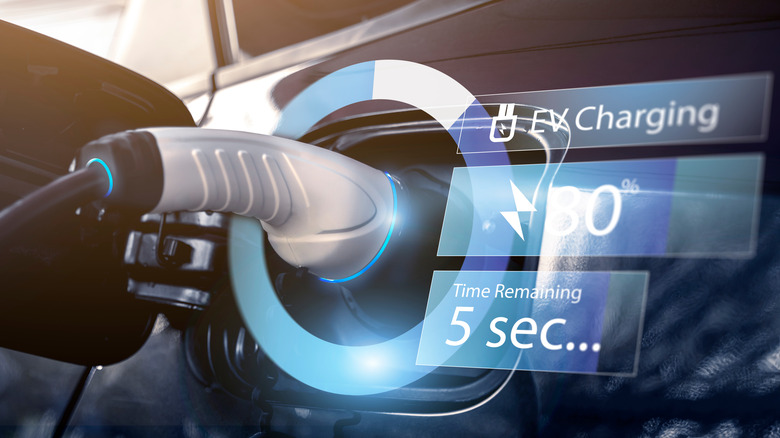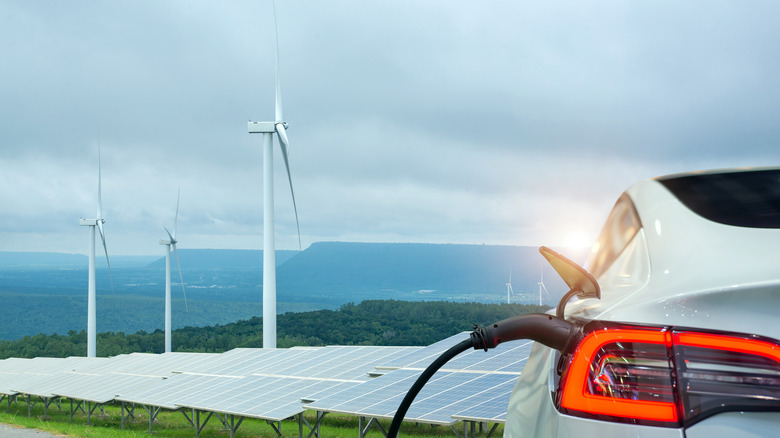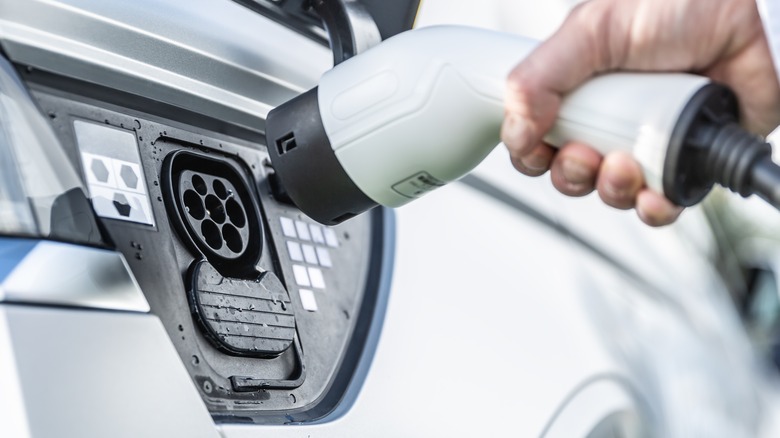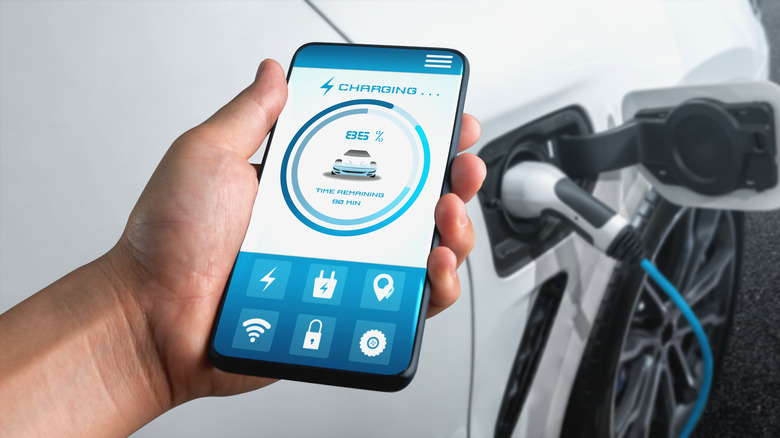Why Charging Infrastructure Will Be The Biggest Challenge For EVs
The first EV makers won the monumental battle of developing the technology necessary for all-electric vehicles to be cost-efficient and ready for mainstream adoption. But no technology, especially mobility technology, exists in a vacuum. In the same way that gas cars require oil extraction operations, pipelines, transportation, and a vast network of gas stations to run, EVs need their own complex charging infrastructure. From finance to energy generation and fast chargers, building this new infrastructure has become the next big challenge facing the EV market.
The U.S. Department of Energy reports that as of April 2022, there were a total of 53,919 EV charging stations and 132,888 EVSE ports in the U.S. and Canada. The American map of EV chargers reveals the uneven distribution of the network, but the challenges for EVs do not end with regional gaps. Experts are concerned about the potential environmental impact caused by the energy sources powering these electric vehicles, as well as insufficient government policies and how to create stations that are accessible to all. The automotive market may offer a growing number of EV options to consumers, but the charging infrastructure these vehicles depend on remains challenging for multiple reasons.
EV chargers aren't evenly spread throughout the U.S.
EV Adoption says that by September 31, 2021, the number of electric vehicles on the road in the U.S. surpassed the 2.1 million mark. Using data from the U.S. Department of Energy and from the Alliance for Automotive Innovation, the organization calculated a key indicator: the ratio of EVs per charging port in every state. This indicator reveals issues that are commonly neglected. For example, California, with more than 930,000 EVs and about one-third of all U.S. charging ports, has a very low ratio of 27.33 to 1. On the flip side, Wyoming, which isn't known for embracing all-electrics, has the best ratio with 4.1 EVs per port despite only having 707 EVs on the road.
The International Energy Association (IEA) says that the European demand requires a ratio of 10 EVs to 1 port. While the average ratio in the U.S. is 14.2 EVs for every charging station, the differences between states are too significant to ignore. The ratio index is key to understanding that it is not just a matter of building new EV charging stations, but also building them where they are needed. The U.S. Department of Energy map reveals a massive gap in the rural regions of the country with charging stations clustering around urban areas.
Government funding will help, but may not be enough
On December 13, 2021, the White House announced the $7.5 billion Electric Vehicle Charging Plan. The final bill nearly halved the original proposal made by President Biden, who had petitioned for $15 billion to build a national network of 500,000 EV charging stations across the U.S. The final Bipartisan Infrastructure Law included $5 billion for state funding with 10% set aside to close gaps in the national charging stations network. An additional $2.5 billion was allocated through grant programs.
The administration said the law was the "largest-ever U.S. investment in EV charging," but experts questioned whether it was enough. EV Adoption says that of the $7.5 billion allocated by the bill, only $5 billion will go to EV charging; the rest will be used for alternative fueling infrastructure, including propane, hydrogen, and natural gas. However, an additional $5 billion is available through federal grants. Running the numbers, EV Adoption says that due to the elevated costs of fast charging technology, the government will have to use slower Level 1 and Level 2 chargers to build 500,000 stations even when investing $10 billion, losing a competitive edge.
Many EV charging stations still use dirty energy
It may come as a paradox but most drivers who choose an all-electric vehicle for environmental reasons are likely charging their EVs in a station that gets its energy from non-renewable resources. The U.S. Energy Information Administration explains that 61% of all electricity generated in 2021 in the country came from fossil fuels, including coal, natural gas, petroleum, and other gases. Additionally, 19% of the energy was generated by nuclear sources, and just 20% was delivered by renewable energy like wind and solar.
There is an international movement to equip EV charging stations with solar panels and wind turbines. Shell, BP, Chevron, and Tesla, are just some of the companies pivoting to seize the market opportunity by building the stations of the future. However, as of 2022, most EV charging stations were still connected to an already stressed energy grid. Outages of energy in the U.S., driven by extreme weather, deteriorating infrastructure, and other issues, are so common that even EV makers like Ford with the F-150 Lightning have adapted their EVs to provide energy to a house during an outage, a feature that is rapidly become standard in the industry.
Too many drivers are still worried about charging options
A February 2022 report from Plug in America revealed that Americans are not relying on public charging stations and are instead choosing to charge their cars at home. Of those surveyed, 59% said it was vital for EVs to charge with renewable energy. Solar panels, solar roofs, and power-wall charging systems like those offered by Tesla are viewed as the main solution by new electric drivers.
Plug in America adds that EV owners "continue to voice frustration with public charging infrastructure, with the most common issues being broken, nonfunctional chargers, [and] too few charging locations." Ninety-two percent of those surveyed said that home charging was their most-used option, while 3% mentioned workplace charging, just 2% used Level 2 public chargers, and another 2% used fast chargers. The Tesla Supercharger network got the best scores for services in the survey, but almost all EV drivers on the road know they are not available for everyone.
Restricted access to chargers and privacy concerns
Tesla's Supercharger is the largest worldwide network of EV chargers with more than 30,000 stations worldwide. These chargers are also the fastest, giving drivers up to 200 miles of range in just 15 minutes. But as of 2022, only a select few non-Tesla drivers can charge their vehicles using these stations. The company launched a pilot program in November 2021 with initial testing in France, the Netherlands, and Norway. Tesla says it will open up the network to all EVs in the future. The congestion of stations is one of the main concerns the company has about this plan, however.
This "exclusiveness" charging issue has become a major problem for electric vehicle owners. While there is a wide range of EV charging station companies, each one has its own app or system to which users must subscribe, and some have different capacities, levels, waiting times, and even charging ports.
Aaron Fisher, a former consultant who worked for the Obama administration, told The Verge that he founded EV Passport because he found aspects of the EV driving experience frustrating. EV Passport works to unify the charging experience under one system, making life simpler for drivers in the process. "You shouldn't have to hand over your full name, or anything in an application, or agree to any type of privacy policy necessarily, to charge your vehicle," Fisher told The Verge. "You don't have to do that when you get gas. Why do you have to do that when you're trying to do something better?"
